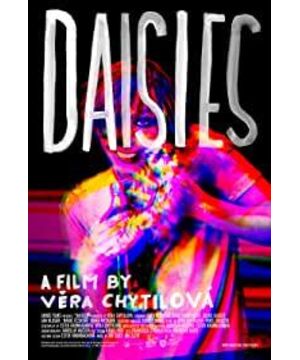Daisies evaluation action
-
Coby 2022-04-12 09:01:11
Rewatched in class on 10/31/16, this is perhaps one of the best new wave movies, since the socialist metaphors and satire in most of the episodes are obvious, its content is not the point, the important thing is that it is The inspection of film as a visual medium breaks through the limitation of film's reliance on formatted dramatic stories, and constructs its own unique narrative through thematically related lens language and visual elements.
-
Thaddeus 2022-04-07 08:01:02
I can see that my whole person is in a state of confusion...hehe...
-
Marie II: There, you see? We do exist after all.
Marie i, Marie II: We are, we are, we are, we are, we are...
-
Marie i: What are you licking?
Marie II: Not like that. Carefully.







